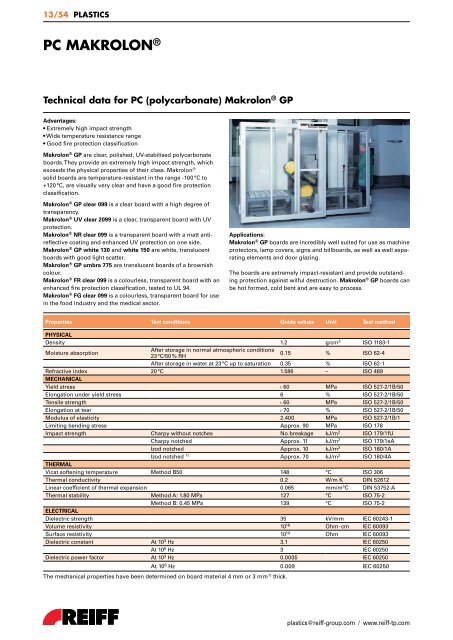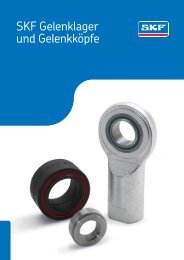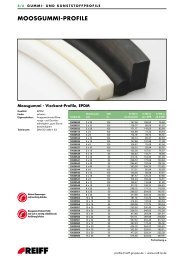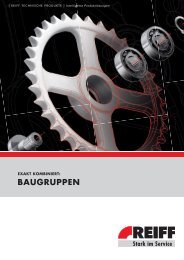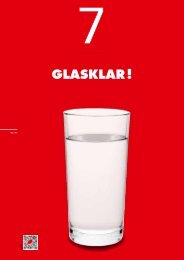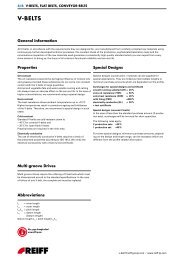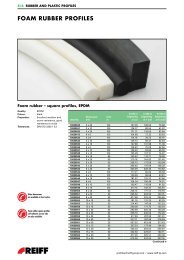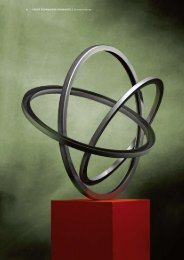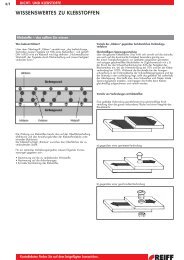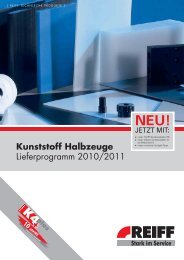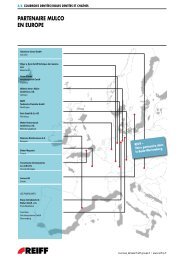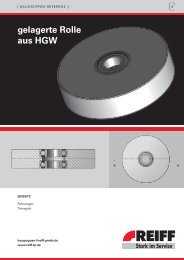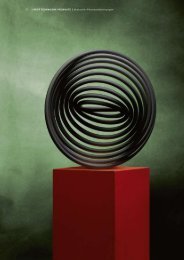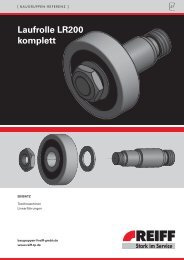REGISTER OVERVIEW PLASTICS
REGISTER OVERVIEW PLASTICS
REGISTER OVERVIEW PLASTICS
Create successful ePaper yourself
Turn your PDF publications into a flip-book with our unique Google optimized e-Paper software.
13/54 <strong>PLASTICS</strong><br />
PC MAKROLON ®<br />
Technical data for PC (polycarbonate) Makrolon ® GP<br />
Advantages:<br />
• Extremely high impact strength<br />
• Wide temperature resistance range<br />
• Good fire protection classification<br />
Makrolon ® GP are clear, polished, UV-stabilised polycarbonate<br />
boards. They provide an extremely high impact strength, which<br />
exceeds the physical properties of their class. Makrolon ®<br />
solid boards are temperature-resistant in the range -100 °C to<br />
+120 °C, are visually very clear and have a good fire protection<br />
classification.<br />
Makrolon ® GP clear 099 is a clear board with a high degree of<br />
transparency.<br />
Makrolon ® UV clear 2099 is a clear, transparent board with UV<br />
protection.<br />
Makrolon ® NR clear 099 is a transparent board with a matt antireflective<br />
coating and enhanced UV protection on one side.<br />
Makrolon ® GP white 130 and white 150 are white, translucent<br />
boards with good light scatter.<br />
Makrolon ® GP umbra 775 are translucent boards of a brownish<br />
colour.<br />
Makrolon ® FR clear 099 is a colourless, transparent board with an<br />
enhanced fire protection classification, tested to UL 94.<br />
Makrolon ® FG clear 099 is a colourless, transparent board for use<br />
in the food industry and the medical sector.<br />
Applications:<br />
Makrolon ® GP boards are incredibly well suited for use as machine<br />
protectors, lamp covers, signs and billboards, as well as wall separating<br />
elements and door glazing.<br />
The boards are extremely impact-resistant and provide outstanding<br />
protection against wilful destruction. Makrolon ® GP boards can<br />
be hot formed, cold bent and are easy to process.<br />
Properties Test conditions Guide values Unit Test method<br />
The mechanical properties have been determined on board material 4 mm or 3 mm1) PHYSICAL<br />
Density 1.2 g/cm<br />
thick.<br />
3 ISO 1183-1<br />
Moisture absorption<br />
After storage in normal atmospheric conditions<br />
23 °C/50 % RH<br />
0.15 % ISO 62-4<br />
After storage in water at 23 °C up to saturation 0.35 % ISO 62-1<br />
Refractive index<br />
MECHANICAL<br />
20 °C 1.586 – ISO 489<br />
Yield stress › 60 MPa ISO 527-2/1B/50<br />
Elongation under yield stress 6 % ISO 527-2/1B/50<br />
Tensile strength › 60 MPa ISO 527-2/1B/50<br />
Elongation at tear › 70 % ISO 527-2/1B/50<br />
Modulus of elasticity 2.400 MPa ISO 527-2/1B/1<br />
Limiting bending stress Approx. 90 MPa ISO 178<br />
Impact strength Charpy without notches No breakage kJ/m2 ISO 179/1fU<br />
Charpy notched Approx. 11 kJ/m2 ISO 179/1eA<br />
Izod notched Approx. 10 kJ/m2 ISO 180/1A<br />
Izod notched 1) Approx. 70 kJ/m2 THERMAL<br />
ISO 180/4A<br />
Vicat softening temperature Method B50 148 °C ISO 306<br />
Thermal conductivity 0.2 W/m K DIN 52612<br />
Linear coefficient of thermal expansion 0.065 mm/m°C DIN 53752-A<br />
Thermal stability Method A: 1.80 MPa 127 °C ISO 75-2<br />
ELECTRICAL<br />
Method B: 0.45 MPa 139 °C ISO 75-2<br />
Dielectric strength 35 kV/mm IEC 60243-1<br />
Volume resistivity 1016 Ohm · cm IEC 60093<br />
Surface resistivity 1014 Ohm IEC 60093<br />
Dielectric constant At 103 Hz 3.1 IEC 60250<br />
At 106 Hz 3 IEC 60250<br />
Dielectric power factor At 103 Hz 0.0005 IEC 60250<br />
At 106 Hz 0.009 IEC 60250<br />
plastics@reiff-group.com / www.reiff-tp.com


